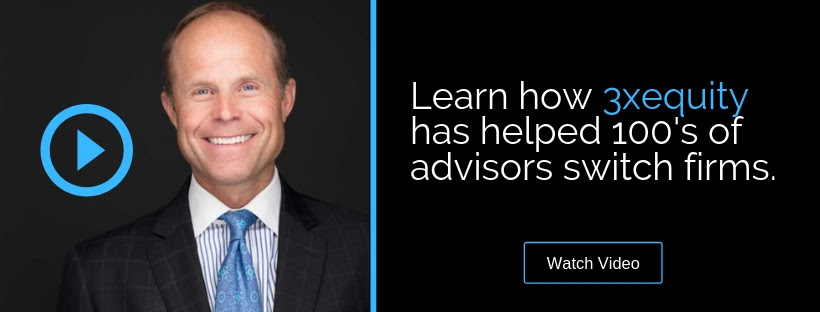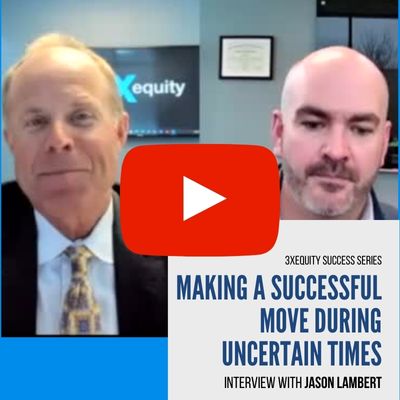Our perspective and priorities of earning, spending, and saving are typically shaped by our environment. Each generation defines its needs and aspirations based on the learnings from the previous generation and from their uniquely shared circumstances. Common literature and research organizes various age groups into generations that are very loosely defined. The purpose of creating these groupings is to better understand the psychology and behavior of each group, so that we can tailor our financial planning services accordingly.

Today the three commonly used terms to classify the general population are Gen X, Gen Y, and Gen Z. After sifting through a myriad of definitions and information about these generational groups, we present an overview of the generational clients and their financial behavior to help you grow your client base.
Gen X – Baby Bust Generation
Gen X largely represents the group of adults born in the early 1960s to the mid-1970s. They are often referred to as the “baby bust” generation as they were born during the time birth rates started to decline. Some of the factors that influence their beliefs include the fact that many belonged to two income households and faced a number of economic downturns that impacted their financial stability. A significant percentage of them are burdened with high student loans, limited savings, and no specific direction towards retirement.
As the Gen X population ages and moves closer to retirement, managing savings and expenditures is a major area of concern. Research from the TD Ameritrade Survey (2012) shows 59% of Gen Xers are making regular and automatic contributions towards retirement savings. At the same time they also represent the first generation to move away from traditional pension plans to 401(k)s and IRAs. In addition to retirement savings, many also feel the need to save towards college tuition for their children. These savings are typically met after the high student loans that many of them carry. As the Baby Boomer generation grows older, many Gen Xers are also taking on the financial responsibilities of their aging parents, thus making it a greater challenge for them to balance their finances.
Shortfalls in funds for retirement is a serious concern for Gen X. The Center for Retirement Research(Boston College) estimates that those who start saving for retirement at age 45 and wish to retire by 65 will need to save up to 27% of their yearly income to maintain their current lifestyle and meet expenses.
Implications: Though a smaller segment of the market, Gen X is looking at various opportunities for saving and growing their financial assets to meet their fast approaching financial needs. While a significant percentage are already planning for retirement, overall financial planning for meeting the diverse financial obligations of Gen X could be an opportunity in waiting.
Gen Y – the Millennials
Gen Y broadly represents the cohort of Americans born in the late 1970s to early 1990s. As per the US population census, in 2015 the Millennials overtook Gen Xers in terms of numbers. Not just in terms of their size, the Millennials differentiate themselves from other generations in terms of their greater diversity and higher educational levels. However, for a number of Gen Y, the higher education has come at the cost of high student loans, which has tended to crowd out saving for the future.
Millennials as a generation have been extensively researched, and a common thread across all the research is that they are ineffective at budgeting expenses, have limited savings, and have no clearly defined retirement plan. While the TD Ameritrade Survey (2012) states that as many as 56% of Gen Yers have an automatic retirement savings process in place, there are still a significant number of Gen Yers that believe retirement is too far into the distance to plan.
According to Goldman Sachs Research, Gen Y is the largest generation in terms of size to move into the prime earning and spending years. While this generation has grown up in a time of rapid technological advancement, they have also see big economic turbulence. Presently a significant percentage of Gen Yers (estimated at 30%) continue to live with their parents. As they reach their prime earning and spending years, there is likely to be a surge in demand for housing as they move out of the nest and look for greater independence.
An interesting aspect of Gen Y’s consumer behavior is their preference towards shared access to products without the risk of ownership. This is the concept of a “shared economy” (examples include Airbnb, Turo, Fon etc.). Gen Y behavior is also greatly shaped by technology that makes price comparisons and community reviews key to the decision making process. This generation is open to referrals from friends and family, but the final decision is typically made only after extensive online research.
In addition to increasing purchasing power of this generation, research estimates that Gen Y will accumulate in assets anywhere from $28 trillion by 2018 to $46 trillion by the end of this decade, of which $18 trillion will be inherited assets from Baby Boomers.
Implications: Gen Y is an important segment for financial business because of its sheer size and volume of assets. They need to be approached by keeping in mind their technologically savvy nature and unique decision-making behavior. The importance of early financial planning that is communicated through use of social media with the right kind of message would be important for engaging Gen Y. A key strategy to engaging Gen Yers is to create and maintain visibility online to establish the image of an engaged financial advisor. Consider creating an online presence, building a community of active followers, and responding to feedback on commonly accessed websites such as Yelp, Google, etc.
Gen Z – iGen
This generation represents people born in the early 1990s to early to mid-2000s. Gen Z was born into technology and is globally connected. It is a generation that believes that education is a key to success: according to a TD AmeriTrade: Gen Z and Money Survey (2014) more than 72% expect to go to college.
Despite the growing concerns of Social Security limitations and issues faced by previous generations with high student loans, presently Gen Z has high credit card debt, while at the same time is choosing savings accounts over other financial investments (TD Ameritrade Survey, 2014). This survey also highlights that, in comparison to the previous generations, Gen Z relies greatly on their parents for their financial knowledge. About 84% of Gen Zers’ parents have spoken to them about money, savings, and investing. One of the top reasons cited for not investing in the stock markets is the lack of knowledge.
Implications – Gen Z represent the investors of tomorrow. Effective financial education could be the key to leveraging the financial assets of Gen Zers and helping them maximize their financial potential. Financial advisors should consider involving the entire family, including the Gen Z children of existing clients, in the financial planning process. By providing appropriate financial education to Gen Z children today, financial advisors are grooming the Gen Z clients of tomorrow. Because Gen Zers are a connected generation, the availability of and access to relevant and engaging content on various media will create a better awareness and brand recall.
As the generational transitions occur, financial advisors need to realign their business strategies and reinvent themselves. Rather than focusing on financial planning for an individual, an inclusive approach of planning for the entire family should be considered. While many companies have succession plans in place to ensure business continuity, similar succession planning from the perspective of existing Gen X and Gen Y clients could help in further growth and preventing erosion of assets under management of financial advisors. The trend of using robo advisors and automated fund selection provide easy access to financial planning, yet financial advisors can establish their place in the new technology-driven market by showcasing their value delivery through personalized, generation-specific, service delivery.




